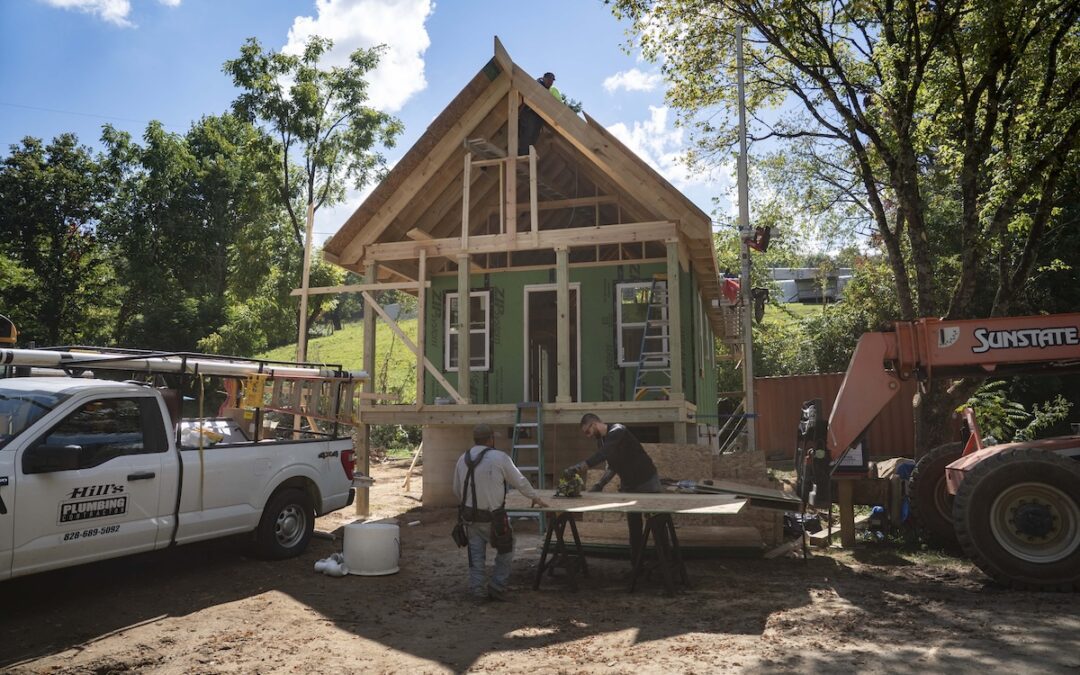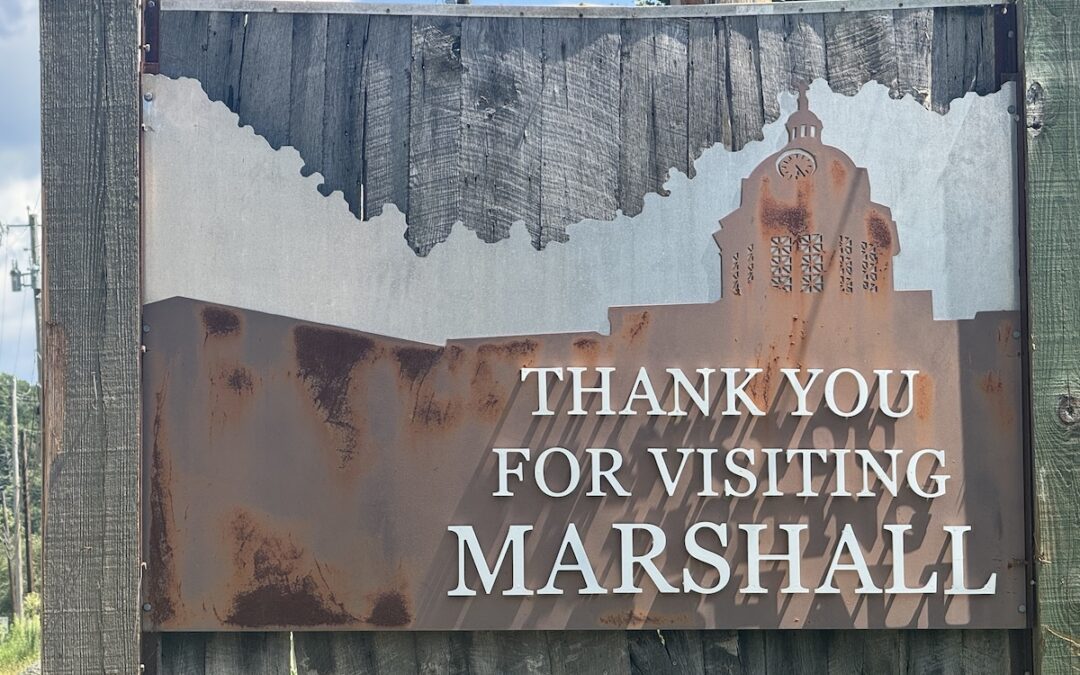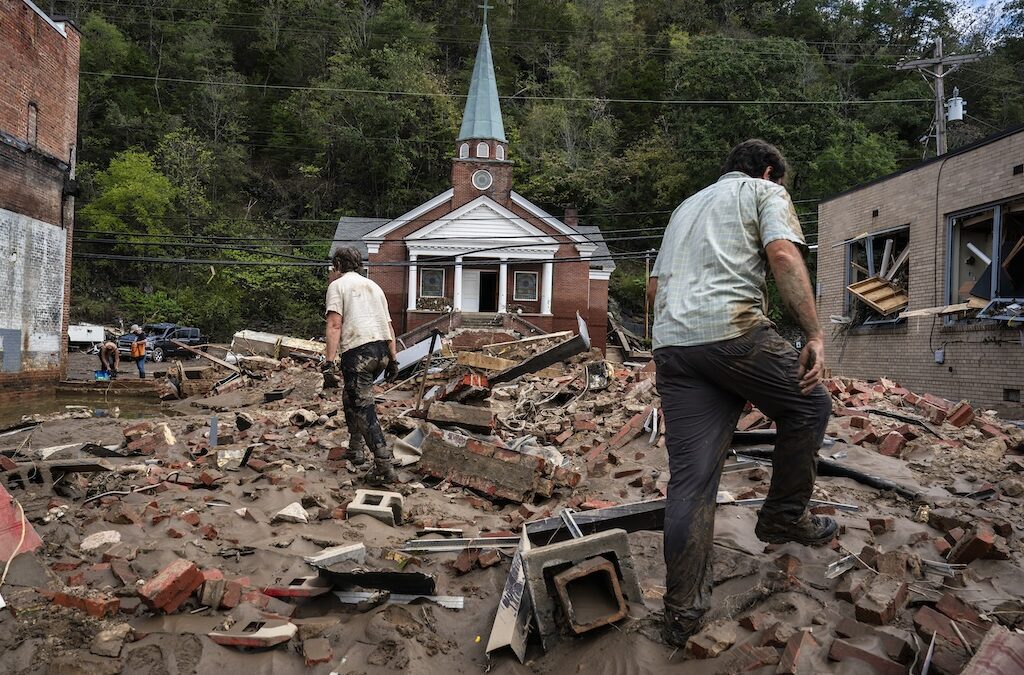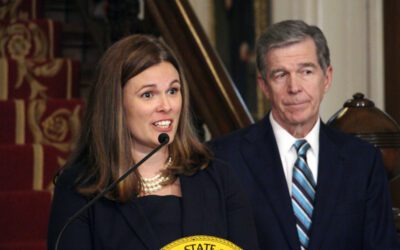
Photo: Photo: Karen Allen/Getty Images
Local leaders face significant challenges and argue Washington and Raleigh could do more to help them recover from the $60 billion storm.
Canton, North Carolina has faced its share of adversity in recent years.
In 2021, Tropical Storm Fred sent flood waters from the Pigeon River raging through the downtown, devastating businesses, and homes. Dozens of people had to be rescued from flood waters in Canton and six people were killed in surrounding Haywood County. In 2023, the closure of the century-old Canton paper mill led to the loss of over 1,000 jobs in the small town 20 miles west of Asheville.
If those events were a one-two punch to Canton, the devastation of Hurricane Helene held the potential to be a knockout blow.
The town did its best to prepare for Helene, said Canton Mayor Zeb Smathers.
“We saw this storm coming,” he told Cardinal & Pine, referencing the town’s experience with Fred. “It was a similar type storm in the gulf, and we weren’t going to take any chances.”
Despite ample preparation and coordination with county and state leaders, there was nothing Canton’s leaders could do to stop the storm.
“You can only do so much when there’s 26-feet of water in your town,” Smathers said.
The storm damaged around 600 homes countywide, including Ben Wilson and Natasha Tafelski’s home. They live about 15 minutes from downtown Canton, and their property sustained significant damage to the tune of hundreds of thousands of dollars.
In Canton and across western North Carolina, communities are still in rebuilding mode. Despite some progress, thousands of residents remain displaced from a permanent home and local governments are being pushed to their financial limits as they struggle to deal with the devastation Helene left behind.
Frustration with the slow support from Washington
Hurricane Helene killed at least 108 people and caused at least $60 billion in damage in North Carolina. In December, Congress approved $9 billion for North Carolina’s recovery. A year after the storm hit, however, the state has only received $5.2 billion in federal funding, a mere fraction of the cost of the total damage.
Fletcher Mayor Preston Blakely says his community felt an immediate impact from Helene when Diamond Brand, a tent and outdoor equipment manufacturer that had operated in Fletcher for nearly 80 years, was forced to permanently close. The storm caused so much damage the company’s CEO said it would be financially impossible to rebuild. The store’s closure led to the loss of 35 local jobs.
For local leaders like Blakely, the slow provision of funding from the federal government has only exacerbated these types of problems.
“I see businesses that have shut down. I see people still unhoused, and I see local governments with big holes in their budget. When all of those things get combined. It has real life impacts,” he told Cardinal & Pine.
Blakely said some federal funds have made it to Fletcher, but that much more is needed to ensure his community doesn’t face more heartache and difficult decisions in the months and years ahead.
“There’s so much red tape, there’s so many things we have to do to get the money down here. I would really like to see some kind of reform of FEMA, because we can’t continue to wait for this money,” he said.
FEMA falls under the US Department of Homeland Security (DHS), led by Secretary Kristi Noem, who imposed a rule that she must personally approve any contracts and expenses that exceed $100,000. Even after Noem approves spending, it then has to be approved by the Department of Government Efficiency’s (DOGE) “Defend the Spend” initiative, which requires both the organizations receiving funds, as well as the agencies providing them, in this case FEMA/DHS, to justify why the money is being spent.
For State Rep. Lindsey Prather, whose district in Buncombe County includes part of Asheville, the slow delivery of federal funds is having a direct impact on the ground. She learned just how severe this impact was in a meeting with Gov. Josh Stein’s committee on Hurricane Helene.
“They estimate that 75,000 homes were damaged here in North Carolina, and that we’ve got the money to repair about 3,000 of those,” Prather told Cardinal & Pine.
Without federal funding, some projects simply aren’t happening.
“It means that people are still waiting to get projects approved, it means that there are contractors and workers that are waiting to get started on projects that can’t because the funds aren’t there. It means that local governments are strapped because they’ve had to front cash for projects and they’re not getting reimbursed,” she said.
Smathers also expressed frustration with the slow process of getting money to his community and those tasked with getting these funds to western North Carolina.
“If you are working on this recovery in Washington, you need a photo of some family that has lost something. Their home, their business, a loved one,” he said. “And every day when you leave, you look at that picture. If you can sincerely look at that picture and that family, and know that ‘today I did all I could,’ great. But if you didn’t, you need to quit.”
Local governments forced to make difficult choices
At the state level, the General Assembly has approved around $1.9 billion in spending to support recovery. The latest bill, passed in June, provided $500 million to support needs such as private road and bridge repair, interest free loans to local governments, infrastructure projects at the local level, as well as money for farmers.
But that pales in comparison to what’s needed, and the absence of adequate federal and state funds means local governments have been forced to bear a greater share of the burden than they can afford in the recovery and rebuilding process.
In some cases, they’ve also had to do this while also losing out on tax revenue because of the storm.
“One of the biggest direct financial benefits of tourism being a third of our economy is people from out of town come here and buy things. That’s a literal financial bonus that we get, and that basically disappeared at the worst possible time,” Buncombe County Commissioner Parker Sloan said.
This has left less funding for other priorities, forcing leaders like Sloan to make difficult spending cuts.
“It’s been hard. We put off paying debts that we owe. We’ve dipped into the school capital fund. We raised taxes and cut things,” Sloan said. “… All of the nonprofits we fund that are amazing at leveraging their dollars, like the Diaper Bank of Western North Carolina, we didn’t give them a dime,” he said.
He hopes that in the future, the federal government makes revenue replacement for local governments a reality after an event like Helene.
“You could easily measure what we lost due to the storm,” he said.
Blakely echoed the concern around declining sales tax revenue.
“All throughout western North Carolina, we’re seeing a loss in sales tax revenue. If we continue to see that trend, there’s going to be some really big questions, some big decisions local governments are going to have to make,” he said. “That’s a scary place to be.”
What Raleigh can do to help western NC
While the federal government is the ultimate backstop for disaster recovery and response and has far more resources, Prather also believes the General Assembly should do more to support her community.
“The biggest failure has been the lack of support for small businesses,” she told Cardinal & Pine.
A July 2025 survey from Mountain Bizworks revealed that 93% of small businesses impacted by Helene have since reopened. However, they suffered an average of over $300,000 in losses and unemployment in the region remains higher than last year.
In downtown Asheville alone, 40 small businesses have closed since Helene. While it’s too late to save them, Prather said the legislature can still act to help small businesses still fighting to survive.
“Just because a business has hung on this long, doesn’t mean that they’re going to be okay for the next year, doesn’t mean they’re going to be okay for the next two months,” she said.
State Rep. Eric Ager, whose district includes part of Asheville and eastern Buncombe County, echoed Prather’s remarks.
“People in the rest of the US, but even the rest of North Carolina, don’t really understand how reliant this region is on true small businesses,” he said.
Ager also said that given the struggles local governments are facing, it was a mistake for the legislature not to provide a cash infusion to them.
“I think that’s coming home to roost now, especially with the slow federal reimbursements,” he said.
For Prather, what’s perhaps most frustrating is that she saw the problems coming a mile away.
“A week after the storm, I was on a Zoom with resilience officers and city councilors from Montpelier, Vermont; Boulder, Colorado, and New Orleans, Louisiana—all places that had gone through a really bad natural disaster,” she said. “The number one thing all of them said was that ‘you can’t wait on federal funding, you’ve got to start spending money.’ And we didn’t do that in our state.”
How can communities prepare for the next Helene?
For the residents and local leaders of western North Carolina, the fallout of Helene—the lost lives, the damage to buildings, homes, and businesses, and the collective trauma the region has experienced—will stay with them forever.
They also worry it won’t be the last time they experience something like it.
“I would be lying to you if I didn’t say every time I know a big storm is coming our way that my heart’s not pounding,” Blakely said.
Prather knows there will be future storms and says preparations must be made to help communities like hers.
“We are all well aware that there’s going to be another storm,” she said. “There’s a lot more that our legislature can do, that the League of Municipalities can do, that the UNC School of Government can do to help better train and support local governments when it comes to things like getting outside grants, so we’re not so fully reliant on Raleigh and DC, because we’ve seen what happens when we are.”
Smathers said that Helene has changed western North Carolina forever, and should lead to a change in storm preparation policies locally and statewide.
“The mountains of western North Carolina seem to be in hurricane alley. The game has changed,” he said.
But Smathers also recognized that there’s only so much local governments can do.
“Mother nature is undefeated.”

One year after Helene, western NC residents reflect on what their communities have been through
Hurricane Helene left at least 108 people dead, over 100,000 homes damaged or destroyed, and over $60 billion in total costs. A year later,...

Marshall sees small business comeback after Hurricane Helene
Last fall, communities across western North Carolina were devastated by Hurricane Helene. A year later, the town of Marshall has reopened and is...

In rural North Carolina, community organizers fight barriers to local government engagement
One of my favorite photos of my friend Jason Dunkin is a selfie he took where he’s grinning ear to ear. He’s sitting across from his local city...

In rural North Carolina, community organizers fight barriers to local government engagement
One of my favorite photos of my friend Jason Dunkin is a selfie he took where he’s grinning ear to ear. He’s sitting across from his local city...

‘Come hell or high water’: A harm reduction team amps it up in response to a disaster
This story by Taylor Sisk was originally published in the Daily Yonder. For more rural reporting and small-town stories, visit dailyyonder.com. By...








